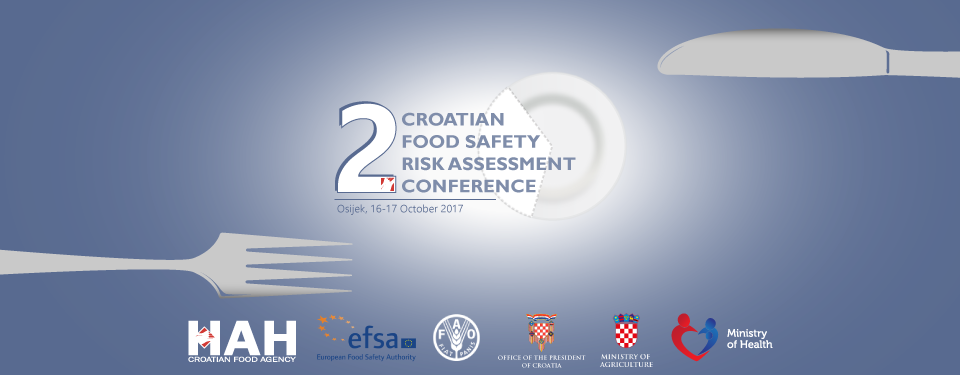Brigita Hengl¹, Snježana Zrnčić², Dražen Oraić², Andrea Gross Bošković¹, Relja Beck²
¹Croatian Food Agency, Osijek, Croatia
²Croatian veterinary institute, Zagreb, Croatia
Many classes of pathogens excreted in faeces and resistant in the water environment are able to initiate waterborne infections. Giardia duodenalis and Cryptosporidium spp. are most important water borne parasites. Protozoa of the genus Cryptosporidium, a group of 27 species and more than 60 genotypes, have been identified worldwide as leading cause of gastrointestinal illness in a variety of vertebrate hosts. More than 15 species of Cryptosporidium have been reported to cause human infections, especially in immunosuppressed population, and the most of them have been related to Cryptosporidium hominis and Cryptosporidium parvum. Another water-borne heterogeneous protozoan parasite G. duodenalis has been divided in potentially zoonotic Assemblages A and B and host specific (C-H). The primary mode of transmission is through oral routes; infections spread with the ingestion of cysts and oocysts by susceptible animals or humans. Shellfish can be used as indicators of pathogen pollution because pathogenic microorganisms that occur in marine environments may be filtered by the gills during feeding and become concentrated in the digestive tract/glands of the mollusc. Since data on Cryptisporidium and Giardia duodenalis are not existing we have analyzed oysters (Ostrea edulis) and mussels (Mytilus galloprovincialis) from different locations covering Croatian coast.
DNA was extracted from the pools of digestive glands (3-5 molluscs) with known location and date of collection. A total of 693 samples (310 mussels and 383 oysters) were checked with nested PCR that amplifies portion of around 560 base pairs of 18S rRNA from Cryptisporidium genus. TPI gene was used to investigate presence of G. duodenalis with nested PCR in 1050 samples (500 mussels and 550 oysters) Positive samples confirmed with capillary electrophoresis were purified, sequenced in both directions, assembled with SeqMan Pro software and compared with available sequences in GenBank using BLAST.
In the current study we have detected only Cryptosporidium hominis in 3.1% oysters and 0.6% mussels with over prevalence of 2%. Positive samples originate from Savudrija Bay, Medulin Bay and Gulf of Mali Ston. Potentially zoonotic Assemblages A I was most prevalent (1.4% in mussels and 2.7% in oysters) followed by Assemblage B (0.8% in mussels and 0.4% in oysters). Host specific Assemblages C and E were found in 0.8% and 0,2% mussels and in 0.4% and 0.7%, respectively. Prevalence was higher in oysters (4.2%) then in mussels (3.2%) with overall prevalence of 7%.
Results of current study represent first molecular confirmation of any Cryptosporidium species in Croatia and first finding in the molluscs. Detection of human isolate C. hominis clearly suggests that humans were source of water contamination and consequently “infection” of shellfishes. Further studies on subgenotyping of Cryptosporidium hominis from humans, water and shellfish as well other Cryptosporidium species such as C. parvum from animals and humans are crucial to understand their potential role as source for human infections. Assemblages of G. duodenalis detected in the current study have been confirmed in Croatia from various animals and this is first finding of host specific and potentially zoonotic Assemblages in shellfishes from almost all investigated locations. Obtained results clearly showed various sources of infection including humans, canids and ungulates. Based on the obtained results and proven zoonotic groups A I for G. duodenalis, and C. hominis potential risk to human health cannot be excluded.







